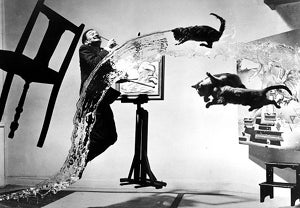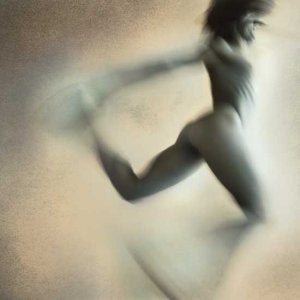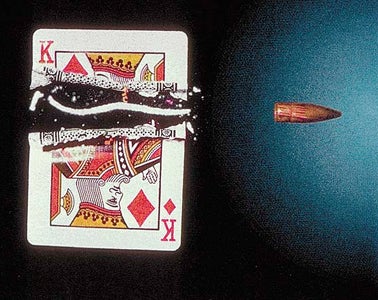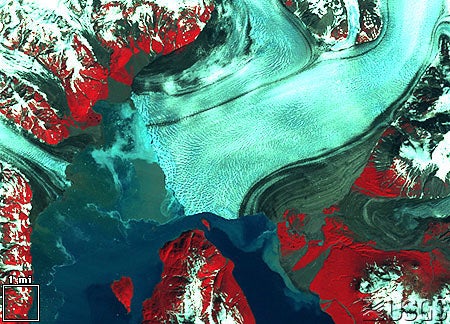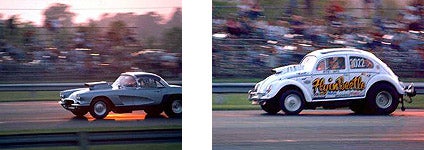Since its invention in 1839, photography has revolutionized the way we understand time. By the 1880s, films and camera technology had progressed to the point where rapidly unfolding events could be "frozen" to reveal aspects of motion that the unaided eye could not perceive. Shutter Speed With the advent of faster films and faster lenses, photographers had a multitude of options available to them. By adjusting the shutter speed of the camera--that is, the speed at which the shutter opens and closes allowing light to reach the film--one can either "freeze" the image or allow for different levels of "blur" to dramatize the speed at which an object is moving.
Philippe Halsman, in his surreal portrait of the Spanish painter, Salvador Dali (above left), uses a fast shutter speed and strobe light to capture the dreamlike effects associated with the artist. Conversely, R.J. Muna (above right)uses a slow shutter speed to accentuate the flow of a dancer's movements. Taking the idea of photography's capability to freeze motion to extremes, photographer Harold Edgerton (below) spent a lifetime creating astonishing images that revealed the heretofore "unseen" by arresting very rapidly unfolding events using a combination of fast film and stroboscopic lights.
Harold Edgerton, Cutting the Card Quickly, 1964 If the duration of an event is either extremely short (such as the time it takes a bullet to pass through a playing card) or extremely long (the time it takes a glacier to advance a few feet), the event is outside the normal bounds of human perception. In such cases, the problem of representing time becomes particularly challenging. Often, it is not until some new technology (e.g., high speed photography) or point of view (e.g., satellite photos of the earth), that we can really understand fully the scope of the problem. Hubbard Glacier, Alaska 1985-1986 Rollover the image above to see glacial movement. For more information about the image above, go to Portfolio: Glaciers. For a hands-on experience of the effects of shutter speed, go to the Interactive Module IXa: Shutter Speeds. Panning Photographers can also use panning techniques, along with shutter speeds, to accentuate change and motion. By panning with a moving object--that is, physically tracking the object in the lens of the camera--the object can be effectively fixed in time against a blurred background.
For more info, go to http://photographytips.com/page.cfm/872
|

